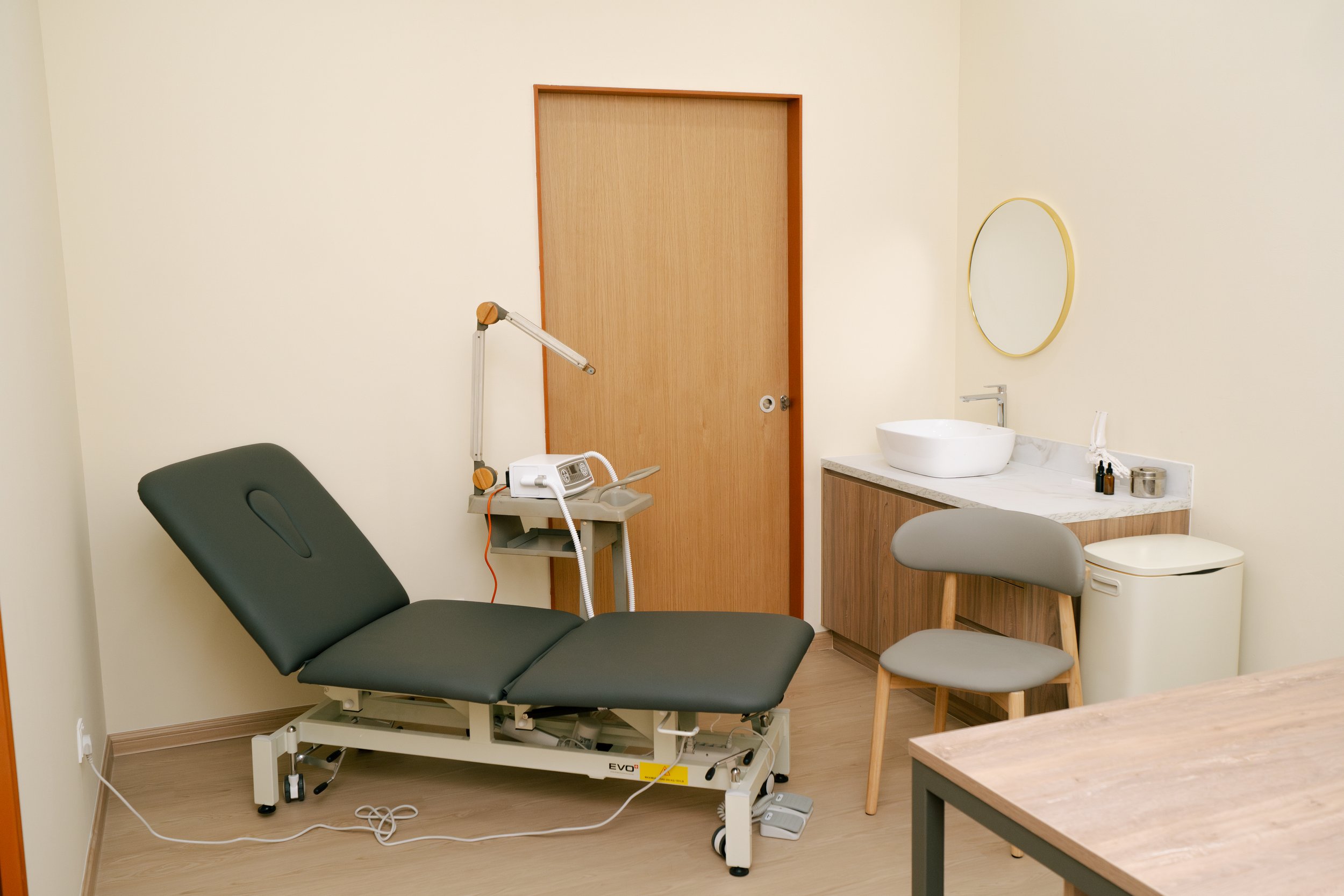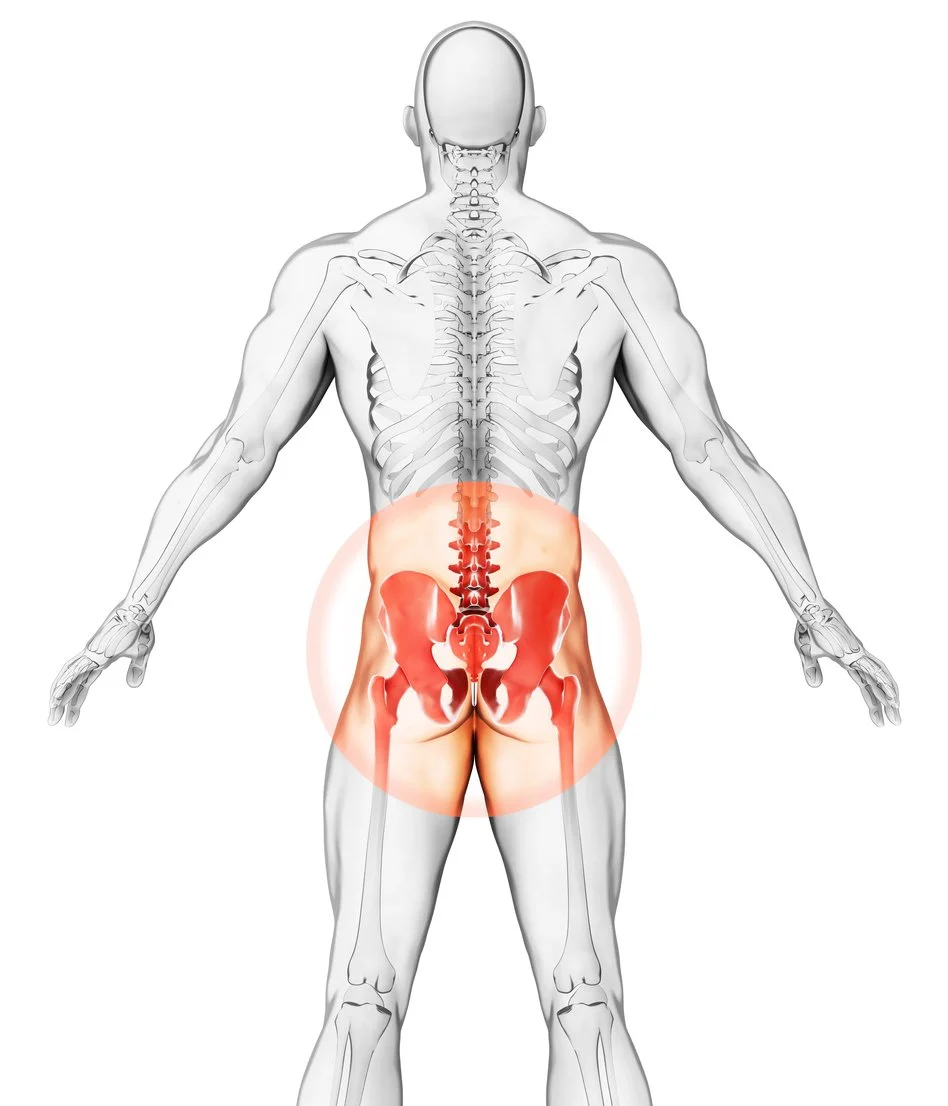
Sacroiliac Joint Dysfunction
What Is Sacroiliac Joint (SIJ) Dysfunction?
Your sacroiliac joints (commonly referred to as SI joints) are the two joints where your spine meets your pelvis—connecting the triangular-shaped sacrum (the base of the spine) with the iliac bones on either side of your pelvis. These joints are located just below your lower back and are responsible for transmitting forces between your upper and lower body.
While the SI joints only allow a small amount of motion, they play a critical role in stabilising your pelvis and spine during activities like walking, bending, and lifting.
When these joints become inflamed, irritated or dysfunctional, you may experience pain in your lower back, buttocks, pelvis or groin. This condition is known as sacroiliac joint dysfunction, and it can affect one or both sides of the pelvis.
What Causes SIJ Dysfunction?
SIJ dysfunction occurs when the joint moves too much (hypermobility) or too little (hypomobility). This altered movement can result from:
Ligament laxity or tightness can occur after pregnancy, trauma, or certain conditions
Prolonged or repetitive stress or poor posture
Direct trauma to the pelvis or lower back
Surgical procedures in the hip or spine
Leg length discrepancies - even a small difference can lead to uneven forces across the pelvis
Muscle weakness or imbalance in the hips or glutes
Abnormal foot posture or biomechanics that disrupt alignment and load transfer
Symptoms of SIJ Dysfunction
Common symptoms include:
Aching or sharp pain in the lower back, buttocks or pelvis
Pain that radiates to the groin, hips or upper thighs
Stiffness or instability in the lower back when standing or walking
Pain that worsens with sitting, climbing stairs or prolonged standing
Difficulty getting up from a seated position
Pain on one or both sides of the lower back
Because these symptoms can mimic other issues like a herniated disc or sciatica, a thorough assessment is important.
How Is SIJ Dysfunction Treated?
Most cases are effectively managed with conservative care:
Manual Therapy
Provided by a physiotherapist or chiropractor to improve joint mobility and reduce inflammation.
Strengthening & Stabilisation
Targeted exercises to build strength in the core, glutes and hip muscles, which help stabilise the SI joints.
Pain Relief
Anti-inflammatory medication, ice, or heat therapy for symptom relief.
Can a Podiatrist Help with Sacroiliac Joint Dysfunction?
Yes – absolutely.
If your foot posture and walking mechanics are contributing to abnormal pelvic alignment or uneven loading across the SI joints, then podiatry intervention can play a major role in both treatment and prevention.
Example:
If your foot excessively pronates (rolls inward), this can cause:
Internal rotation of the tibia and femur
Increased pressure at the knee and hip
Misalignment of the pelvis and sacrum
Over time, this misalignment can lead to SI joint irritation or overload, especially when combined with muscular imbalances or poor posture.
How We Help at KL Foot Specialist Podiatry
At our clinic, we assess your lower limb biomechanics, gait, posture, and foot structure to determine whether your SIJ dysfunction is being influenced by what’s happening at the feet.
We may recommend:
Custom foot orthotics
To correct biomechanical abnormalities, balance out leg length discrepancies, and offload excessive forces from the pelvis.Footwear advice and modifications
Supportive shoes can help stabilise your feet and prevent overloading of the SIJ.Gait retraining and functional strengthening
To optimise the way you move and reduce strain higher up the kinetic chain.
Evidence-Based Support
A 2015 study by Cho & Yoon* found that shoe inserts significantly reduced SIJ pain in patients with poor pelvic alignment. The inserts helped stabilise the pelvis and improve walking patterns, reducing stress on the sacroiliac joints.
Cho, B.Y., & Yoon, J.G. (2015). The effect of gait training with shoe inserts on the improvement of pain and gait in sacroiliac joint patients. Journal of Physical Therapy Science, 27(8), 2469–2471.
What Happens If You Ignore SIJ Dysfunction?
Persistent lower back, buttock or pelvic pain
Decreased mobility or exercise tolerance
Compensatory problems in the hips, spine or knees
Increased risk of long-term postural imbalances and joint degeneration
Prevention Tips
Maintain strong gluteal and core muscles
Wear well-fitted, supportive shoes
Correct any abnormal foot posture (e.g. overpronation)
Practice good posture, especially when sitting or lifting
Address leg length differences early
Use proper lifting techniques and avoid excessive twisting
Stay active to avoid joint stiffness and muscle imbalances
Experiencing Lower Back or Pelvic Pain?
Book an appointment with one of our experienced podiatrists at KL Foot Specialist Podiatry. We’ll help assess whether your foot and leg mechanics are contributing to your SIJ dysfunction — and design a personalised plan to restore comfort, mobility and function.
Serving patients across Malaysia
Book online or call us today.
